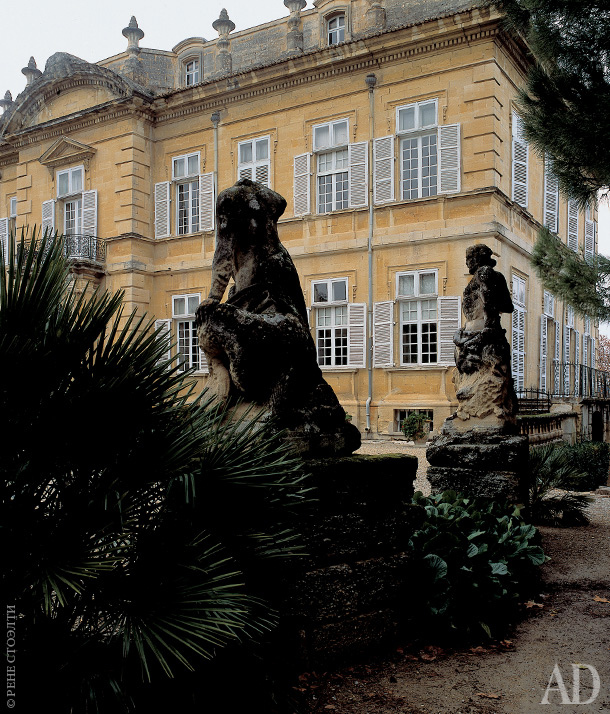The list of candidates for the title of "paradise on earth" Provence is one of the first places.Ancient Roman provincia (hence the name) has always been famous for its wine, food, mild climate, beautiful ocher hills, blue lavender fields - and architecture. Why are there only: Roman ruins, medieval towns (including the ancient capital of the papacy to Avignon), vangogovskie "grape" village under Arles. And, of course, the legacy of "gallant" century - the palaces of the nobles of the era of the last three Louis.Chateau de Barbantane - just one of them. Family de Barbantan Provencal residence began to build in 1654, but ended the first phase of works only in 1674-m, in the midst of the reign of Louis XIV. How then was taken Barbantany made his residence as similar to Regal: contemporaries compared with Barbantan Chateau de Grand Trianon, one of the palaces of Versailles.Truly a palace blossomed yet after a hundred years, under Louis XV. Then owner of the house, Joseph Pierre Balthazar de Puget, the Marquis de Barbantan, was the messenger of the king in Tuscany. Travel to Florence instilled in him a passion for there the architecture, and he decided to Italianize his chateau. From 1768 till 1788 from Florence to Barbantan transported tons of marble and statues, and local cabinetmakers learned smartly styled his work on Italian models.End of construction put great French Revolution. Chateau de Barbantan fortunate - it escaped destruction, and its owners - the guillotine, but they were not up to the interiors. Although the family passion for design was so strong that even a political protest Marquis de Barbantan expressed arts. After the execution of Louis XVI he painted some of the furniture in the living room in black - and did not fail to trumpet throughout its audacity.Chateau and today remains a family home than the current Marquis Henri de Puget de Barbantan justly proud. Money for the chateau he earns, floating house tourists. Marquis personally guided tours, telling historical anecdotes and pointing visitors to a variety of kinds of marble, cast iron forging a large staircase, family portraits, porcelain trinkets and motley furniture and Louis Regency.
When asked about the future of the Marquis Chateau - not worried about whether his fate family nest in the turbulent modern world - he says: "In Provence, say, if a man dances well Carmagnola our folk dance - he will be a great husband and a strong owner. My son carmagnole dances beautifully, so I do not worry about anything. " Text: Barbara Stoelti











